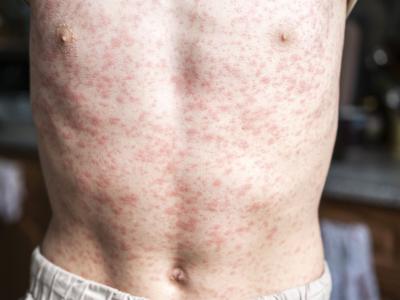Our weekly wrap-up of antimicrobial stewardship & antimicrobial resistance scans
SHEA survey finds increasing support for hospital stewardship programs
Originally published by CIDRAP News Jul 18
A survey of hospitals in the Society for Healthcare Epidemiology of America (SHEA) Research Network shows an increase in antimicrobial stewardship programs (ASPs) and more financial support for ASP personnel since 2013, as well as concerns about ASP funding and staffing levels.
The results of the survey, which appeared yesterday in Infection Control and Hospital Epidemiology, also show a shift in surveillance focus to multidrug-resistant gram-negative (MDR-GN) organisms.
Of the 132 facilities invited to participate in the 2018 survey, 64 responded, including 47 from the United States and 17 from 11 other countries. ASPs were present in 95% of facilities in 2018, compared to 85% in 2013, and the proportion of facilities providing financial support for physician stewardship medical directors rose to 78%, up from 52% in 2013. Financial support for stewardship pharmacists grew as well, from 54% of hospitals in 2013 to 85% in 2018. However, while 50% of ASPs expected an increase in responsibilities in 2019, more than 50% cited lack of funding and staff as challenges.
Active surveillance for multidrug-resistant organisms (MDROs) was frequently reported in both surveys, with methicillin-resistant Staphylococcus aureus (MRSA) the most common organism for which surveillance was performed. But the proportion of facilities performing MRSA surveillance fell from 90% in 2013 to 69% in 2018, while surveillance for MDR-GNs rose from 46% of hospitals to 50%. Although respondents weren't asked about surveillance for specific MDR-GNs in 2013, 50% of hospitals reported surveillance for carbapenem-resistant Enterobacteriaceae in 2018.
The survey also found that monitoring of environmental cleaning effectiveness was performed in 98% of hospitals in 2018, compared with 80% in 2013.
"Overall, our survey demonstrates the increasingly complex role of the healthcare epidemiologist and ASP, including growing regulatory demands, burgeoning antibiotic resistance threats, and integration of emerging technologies into existing workflows; however, most facilities do not anticipate receiving additional resources to meet these demands," the authors write. "Funding to support healthcare epidemiology research from all governmental levels, as well as hospital-level support of IPC [infection prevention and control] programs and ASPs should be prioritized."
Jul 17 Infect Control Hosp Epidemiol abstract
Ethiopian study finds non-prescriptions antibiotics for kids are common
Originally published by CIDRAP News Jul 18
A study involving simulated patient encounters suggests pharmacies and drug stores in Ethiopia commonly dispense antibiotics for childhood illnesses without a prescription, researchers reported this week in Antimicrobial Resistance and Infection Control.
To explore the prevalence of non-prescription antibiotic sales for childhood illnesses, the researchers selected a random sampling of 262 privately-owned pharmacies and drug stores in Addis Ababa, then analyzed responses to five scenarios of simulated patient encounters. Each encounter involved a medical student posing as a parent or caretaker of a sick child and requesting antibiotics without a prescription; in each scenario, the child's illness was increasingly severe, and stronger antibiotics were requested. The researchers also explored factors associated with non-prescription antibiotic sales.
Of the 262 encounters observed, 63.4% ended up with the dispenser agreeing to provide the requested antibiotics. Sixty-two percent of dispensers asked whether the child had seen a doctor, while only 11% asked about past history of drug allergies. Requests were more likely to be approved when dispensers asked about the child's symptoms (adjusted odds ratio aOR, 2.41; 95% confidence interval [CI], 1.24 to 4.71); when a request for more than one antibiotic was made (aOR, 2.99; 95% CI, 1.26 to 7.10); when the request was for oral antibiotics for a child with acute diarrhea (aOR, 3.30; 95% CI, 1.25 to 8.71); and when antibiotics for children hospitalized with pneumonia were requested (aOR, 4.52; 95% CI, 1.72 to 11.86).
The authors of the study say that further education and training for pharmacy staff and stricter enforcement of national regulations against non-prescription sales of antibiotics are needed.
Jul 16 Antimicrob Resist Infect Control study
FDA approves Merck's combination antibacterial
Originally published by CIDRAP News Jul 17
The US Food and Drug Administration (FDA) today announced the approval of Recarbrio, a new three-drug antibacterial product developed by Merck, for treating patients with complicated urinary tract infections (cUTIs) and complicated intra-abdominal infections (cIAIs) caused by gram-negative pathogens.
The injectable drug, a combination of the previously FDA-approved antibiotic imipenem-cilastatin and the novel beta-lactamase inhibitor relebactam, was approved for use in adults who have limited or no treatment options available, the FDA said in a press release.
"The FDA remains focused on facilitating the development of safe and effective new antibacterial drugs to give patients more options to fight serious infections," said Ed Cox, MD, MPH, director for the Office of Antimicrobial Products in FDA's Center for Drug Evaluation and Research. "It is important that the use of Recarbrio be reserved for situations when there are limited or no alternative antibacterial drugs for treating a patient's infection."
Approval was based on efficacy data from a trial of imipenem-cilastatin for treatment of cUTIs and cIAIs, and on in vitro and animal-infection model studies that examined the contribution of relebactam, which protects imipenem from degradation by beta-lactamases. The safety was assessed in two trials: a cUTI trial in which 99 of 298 patients were treated with Recarbrio, and a cIAI trial in which 117 of 347 patients were treated with the drug.
The most common side effects reported were nausea, diarrhea, headache, fever, and increased liver enzymes.
A press release from Merck notes that Recarbrio should only be used to treat infections that are proven or suspected to be caused by susceptible bacteria.
Jul 17 FDA press release
Jul 17 Merck press release
Scientists identify potential new Candida auris clade
Originally published by CIDRAP News Jul 17
A team of Dutch, Iranian, and US scientists have identified a potential fifth clade of the multidrug-resistant fungus Candida auris, according to a letter published yesterday in Emerging Infectious Diseases.
The discovery was based on the results of whole-genome sequencing conducted on an isolate from a 14-year-old Iranian girl diagnosed with a C auris infection in her ear. The case, diagnosed in 2018, was the first known C auris infection in Iran, and the patient was reported to have never traveled outside of the country. The isolate was susceptible to the three major classes of antifungal drugs.
Comparison with 74 C auris isolates from other countries confirmed that the isolate was genetically distinct from the four other identified clades (commonly referred to as the South Asian, East Asian, African, and South American clades). Isolates from the East Asian clade were closest genetically.
To date, all of the isolates analyzed from more than 35 countries where C auris cases have been reported have clustered in the four clades.
"Ultimately, our discovery is a reminder that much about C. auris remains to be learned and underscores the need for vigilance in areas where C. auris has not yet emerged," the scientists write.
Jul 16 Emerg Infect Dis research letter
Pharmacist review linked to lower antibiotic use in French hospitals
Originally published by CIDRAP News Jul 17
An analysis of nationwide hospital data in France has found that antibiotic consumption was lower in hospitals where the antibiotic advisor was a pharmacist, and a pharmaceutical team reviewed all prescriptions, French researchers reported yesterday in the Journal of Global Antimicrobial Resistance.
For the retrospective observational study, researchers analyzed 2016 data from 77 hospitals involved in the French antibiotic consumption surveillance network. In addition to antibiotic consumption data, they also looked at antimicrobial stewardship (AMS) measures, pharmacist-specific actions, and use of a computerized prescription order entry (CPOE) system. Associations between antibiotic consumption and stewardship measures were assessed using linear regression.
The analysis found that pharmacists were involved in AMS programs in 73% of hospitals and served as the antibiotic advisor in 25%. Univariable analysis identified CPOE use (P = 0.04), pharmaceutical review (P = 0.004), and the antibiotic advisor being a pharmacist (P = 0.003) as measures associated with lower overall antibiotic consumption. In the multivariable analysis, antibiotic advisor being a pharmacist (P = 0.002) and pharmaceutical review covering all beds (P = 0.03) were significantly, independently associated with lower antibiotic consumption.
"These results highlight that actions initiated by pharmacists have a positive impact and should be supported," the authors of the study conclude.
Jul 16 J Glob Antimicrob Resist abstract
CDC reports uptick in Candida auris cases
Originally published by CIDRAP News Jul 16
The number of confirmed and probable cases of the multidrug-resistant fungus C auris in the United States rose to 716 as of May 31, reflecting an increase of 32, the US Centers for Disease Control and Prevention (CDC) said in its most recent case-count update.
The number of affected states remains at 12, with New York (340), Illinois (184), and New Jersey (147) reporting the vast majority of cases. Other states reporting cases include Florida (20), Massachusetts (8), California (5), Texas (4), Maryland (3), Oklahoma (2), Connecticut (1), Indiana (1), and Virginia (1).
Of the cases reported to the CDC, 30 are probable and 686 have been lab-confirmed. In its previous update, involving cases through April, the CDC reported 684 C auris cases. An additional 1,342 patients have been found to be colonized with C auris, as determined by targeted screening in 10 states with clinical cases.
Since it was identified in 2009 in Japan, C auris has triggered outbreaks in healthcare facilities in 23 countries, and 12 countries have reported single cases. C auris can cause serious invasive infections in immunocompromised patients, and has shown resistance to three major antifungal drug classes. The CDC has estimated that 30% to 60% of patients with infections have died.
Jul 12 CDC update
Welsh government releases AMR plan for animals and the environment
Originally published by CIDRAP News Jul16
The government of Wales yesterday released a 5-year plan to address antimicrobial resistance in animals and the environment.
The plan, which aligns with the United Kingdom's 5-year national action plan on AMR, lays out how the government aims to reduce antimicrobial use in animals and contain the spread of resistance in the environment. The five major components of the plan included reducing the need for antimicrobials in farmed animals through better infection prevention and control; optimizing the use of antimicrobials in animals through improved stewardship; minimizing the amount of resistant bacteria and resistance genes in the environment; building stronger laboratory capacity and AMR surveillance in animals; and investing in innovation.
The government says it will establish a new body—the Animal and Environment AMR Delivery Group—to monitor implementation of the plan and ensure that the outcomes are achieved.
Jul 15 Welsh government 5-year plan
Study demonstrates spillover effect of probiotics
Originally published by CIDRAP News Jul 15
Chinese researchers have for the first time demonstrated that one-third of commercial probiotics used in agriculture were contaminated with life-threatening pathogens such as Klebsiella pneumoniae.
The study was published in Clinical Infectious Diseases.
The study was conducted between 2016 and 2018, and was based on samples collected from a chicken farm in Anshan that used probiotics as a feed supplement, and a nearby fish farm that used groundwater as a water source.
A total of 123 probiotic Bacillus spp. isolates were obtained from the 92 brands of probiotics, of which 45 isolates were resistant to antibiotics. Furthermore, the authors wrote that genomic surveillance of the chicken farm identified an anthrax toxin-positive Bacillus cereus strain in a probiotic feed supplement, which was transferred into the groundwater at the fish farm.
Retrospective analysis of surveillance data from 2015 through 2018 in three provinces found two B cereus strains from humans with intestinal anthrax symptoms and confirmed the transmission of B cereus from farm to human.
"This study provides the first national safety survey of animal-use probiotics in China and confirms the spillover effects of probiotics from the farms to human. These results suggest that the large-scale application of pathogen-containing probiotics leads to the transfer of pathogens, with worrisome implications for public health," the authors concluded.
The findings are important from a One Health perspective on probiotic use, the authors said. Because probiotic feed supplements are usually used in large quantities, the findings of this study demonstrate a threat to human health.
Jul 15 Clin Infect Dis study














